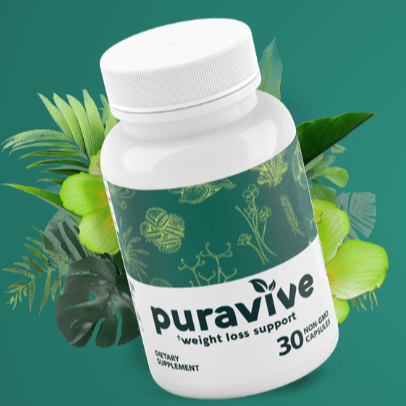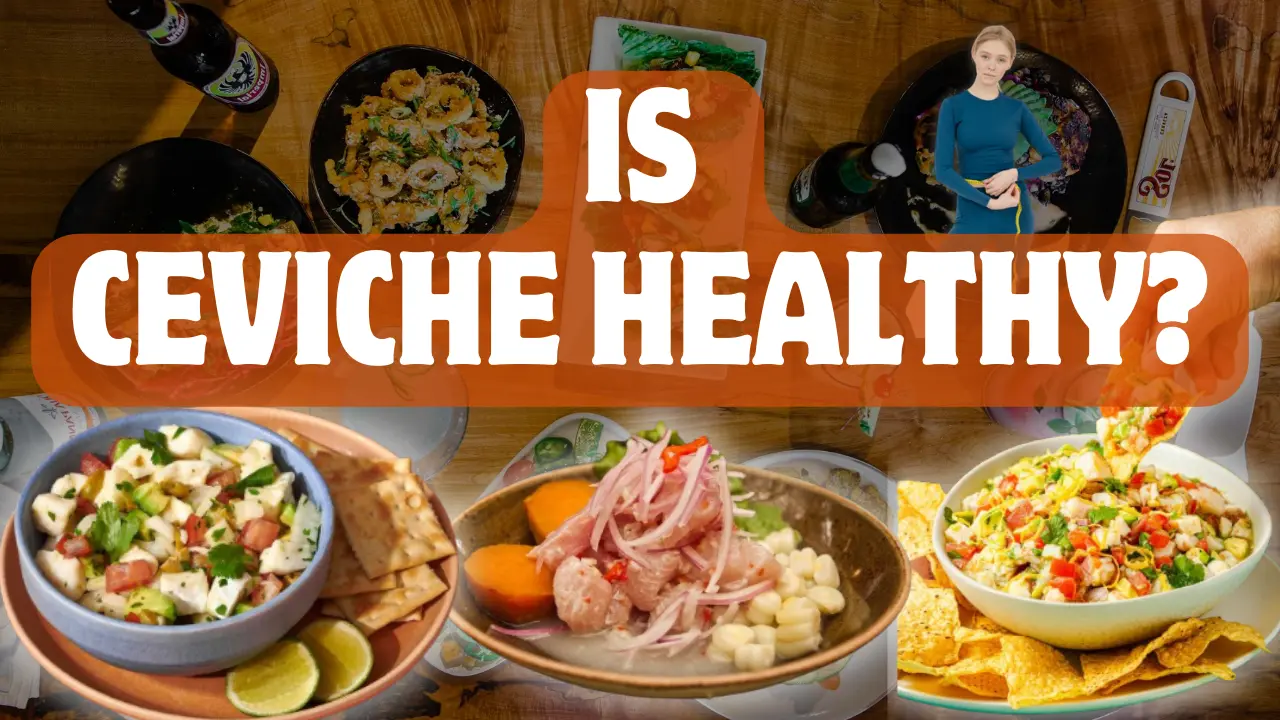Is Ceviche Healthy? A Deep Dive into the Nutritional Benefits and Risks. Ceviche, a popular dish in many Latin American countries, has gained widespread attention for its refreshing taste and perceived health benefits. But is ceviche truly a healthy choice? Let’s explore the nutritional content, health benefits, considerations for consumption, potential risks, cultural significance, and preparation methods of ceviche to determine its overall healthiness.
Nutritional Content of Ceviche
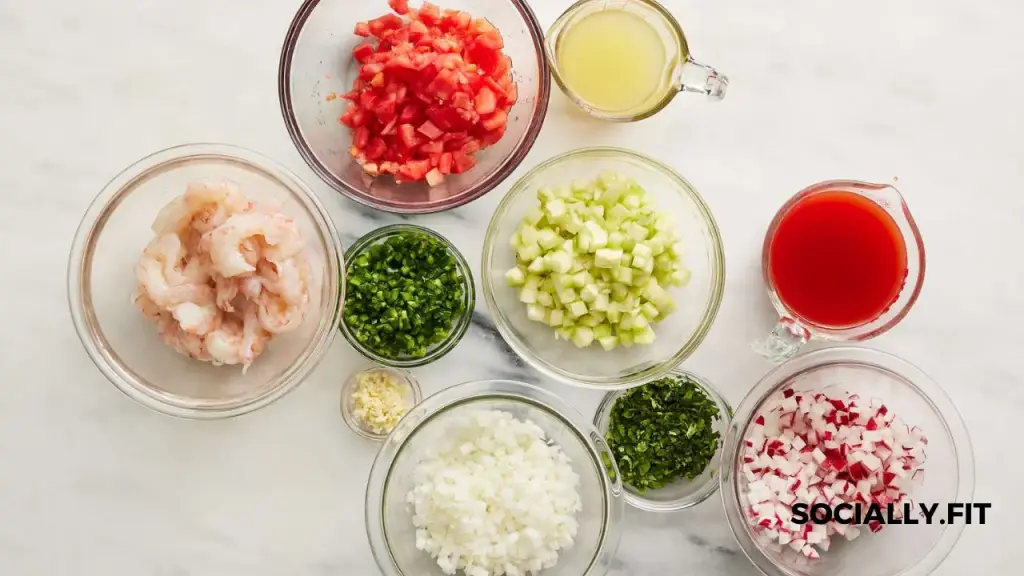
- Protein: Ceviche is a rich source of protein, which is essential for muscle repair and growth. The primary protein source in ceviche is raw fish, providing all the essential amino acids required by the body.
- Vitamins: Ceviche contains various vitamins, including vitamin C and vitamin D. Vitamin C supports immune function and collagen production, while vitamin D is essential for bone health and calcium absorption.
- Minerals: Ceviche is also rich in minerals such as potassium and selenium. Potassium helps regulate blood pressure and fluid balance, while selenium acts as an antioxidant, protecting cells from damage.
- Omega-3 Fatty Acids: Certain types of fish used in ceviche, such as salmon and tuna, are high in omega-3 fatty acids. These healthy fats have been linked to a reduced risk of heart disease and inflammation.
- Low in Calories: Ceviche is relatively low in calories, making it a suitable option for those watching their weight or calorie intake. It’s often considered a light and refreshing dish.
- Low in Fat: Ceviche is naturally low in fat, particularly saturated fat. This makes it a healthier alternative to fried or heavily processed foods that are high in unhealthy fats.
- High in Water Content: Ceviche is made with citrus juices, which contribute to its high water content. Staying hydrated is essential for overall health, and consuming water-rich foods like ceviche can help maintain hydration levels.
Is Ceviche Healthy
Health Benefits of Ceviche
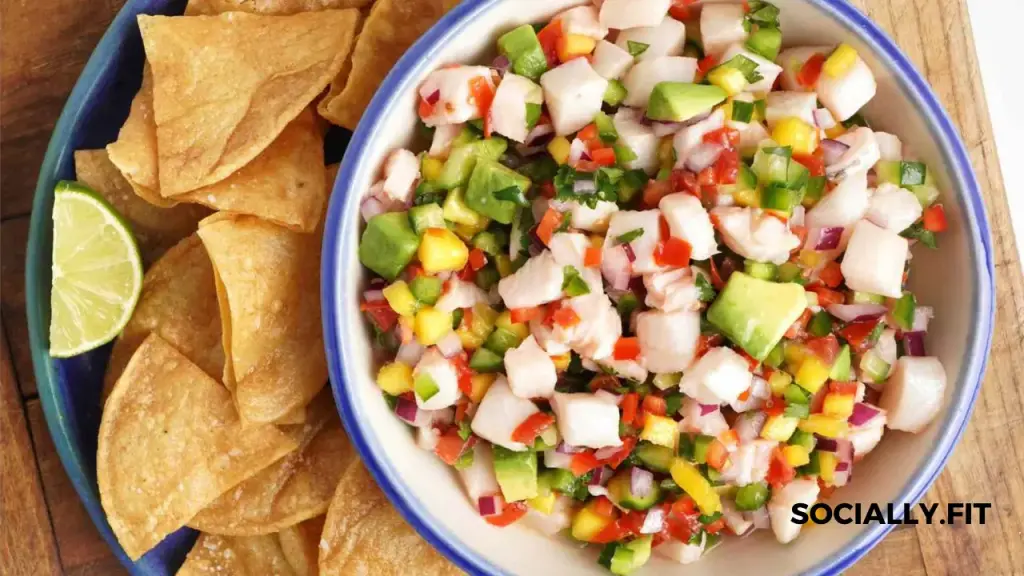
- Heart Health: Ceviche, particularly when made with fatty fish like salmon or tuna, is rich in omega-3 fatty acids. These healthy fats have been shown to lower triglyceride levels, reduce inflammation, and decrease the risk of heart disease.
- Weight Management: Ceviche is low in calories and fat but high in protein, which can help you feel full and satisfied while consuming fewer calories. Including ceviche in your diet can support weight management goals by promoting satiety and reducing the urge to overeat.
- Improved Digestion: The acidity of the citrus marinade used in ceviche can aid digestion by breaking down proteins and facilitating the absorption of nutrients. Consuming ceviche may help alleviate digestive issues and promote gut health.
- Boosted Immunity: Regular consumption of ceviche supports overall immune function because it contains vitamin C from citrus fruits like lime or lemon juice, which boosts the immune system and helps the body fight off infections and illnesses.
- Skin Health: The vitamins and antioxidants present in ceviche, particularly vitamin C, contribute to healthy skin by promoting collagen production and protecting against oxidative damage from UV radiation and environmental pollutants. Including ceviche in your diet may help maintain youthful and radiant skin.
- Brain Health: Omega-3 fatty acids found in fish are essential for brain health and cognitive function. Consuming ceviche, which is rich in omega-3s, may help improve memory, concentration, and overall brain health.
Is Ceviche Healthy
Considerations for a Healthy Ceviche
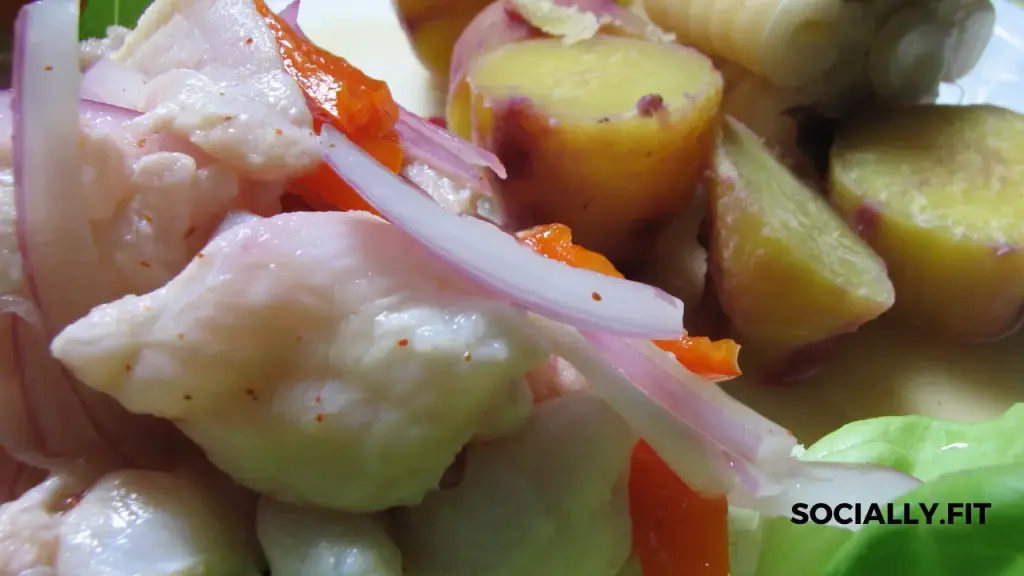
- Fresh Ingredients: Use only the freshest ingredients, especially when it comes to the fish. Fresh fish ensures the best taste and reduces the risk of foodborne illnesses.
- High-Quality Fish: Select high-quality, sushi-grade fish for your ceviche. Ensure that the fish has been properly handled and stored to minimize the risk of contamination.
- Proper Marination: Marinate the fish in citrus juices for an adequate amount of time to effectively “cook” the fish and kill any potential bacteria. Ensure that the fish is marinated for at least 30 minutes to one hour.
- Hygiene and Food Safety: Practice proper hygiene and food safety measures when preparing ceviche. Wash your hands thoroughly before handling food, and use clean utensils and cutting boards to prevent cross-contamination.
- Refrigeration: Keep ceviche refrigerated until ready to serve and consume. Refrigeration helps slow down bacterial growth and maintain the freshness of the dish.
- Portion Control: Enjoy ceviche in moderation, especially if you’re watching your calorie intake. While ceviche is low in calories, consuming large portions can still contribute to your overall calorie consumption.
- Accompaniments: Choose healthy accompaniments for your ceviche, such as fresh vegetables, avocado, or whole-grain crackers. Avoid high-calorie or high-fat toppings that can detract from the nutritional value of the dish.
- Avoid Over-Marinating: While marinating the fish is essential for flavor and texture, avoid over-marinating, as this can result in a mushy texture and overpowering citrus flavor.
Is Ceviche Healthy
Potential Risks of Ceviche
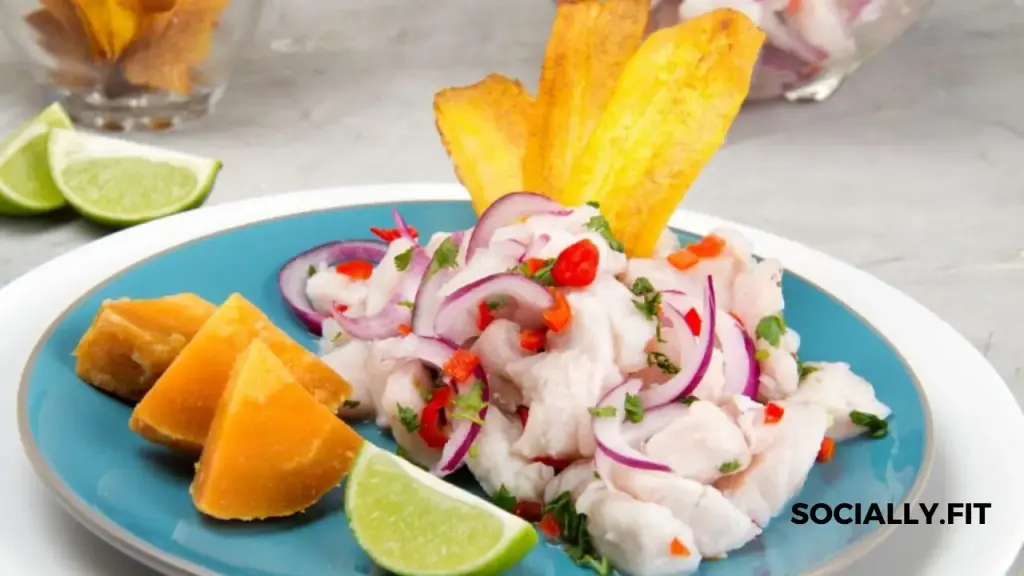
- Foodborne Illnesses: Consuming improperly prepared or contaminated ceviche can lead to foodborne illnesses such as food poisoning because it contains raw fish, which can harbor harmful bacteria and parasites such as salmonella, Vibrio vulnificus, and tapeworms.
- Cross-Contamination: If not prepared and stored properly, ceviche can become contaminated through cross-contact with other ingredients or surfaces that have come into contact with raw fish or seafood.
- Allergic Reactions: Some individuals may be allergic to certain types of fish or seafood used in ceviche. Allergic reactions can range from mild symptoms such as hives and itching to severe reactions like anaphylaxis, which can be life-threatening.
- Mercury Contamination: Certain types of fish commonly used in ceviche, such as swordfish and king mackerel, may contain high levels of mercury. Prolonged exposure to mercury can lead to adverse health effects, especially in pregnant women, nursing mothers, and young children.
- Acidic Sensitivity: The high acidity of the citrus marinade used in ceviche may cause discomfort or irritation for individuals with sensitive stomachs or acid reflux.
- Digestive Issues: Consuming large quantities of ceviche or eating it too quickly can lead to digestive issues such as bloating, gas, and diarrhea, especially in individuals with sensitive digestive systems.
- High Sodium Content: Some recipes for ceviche may include added salt or salty ingredients, which can contribute to high sodium intake. Excessive sodium consumption can increase the risk of high blood pressure, heart disease, and stroke.
Is Ceviche Healthy
Cultural Significance of Ceviche

Transitioning from its origins as a simple fish preparation to a celebrated culinary dish, ceviche embodies the coastal lifestyle and cultural heritage of these regions.
Traditionally, ceviche is more than just a meal; it’s a social experience, often shared among friends and family during gatherings and celebrations. Passed down through generations, recipes for ceviche reflect regional variations in ingredients and preparation methods, showcasing the diverse culinary traditions of Latin American cultures.
Furthermore, fishing communities deeply intertwine ceviche with their reliance on the sea for sustenance and livelihood. Fishermen often prepare ceviche using the freshest catch of the day, emphasizing the connection between the dish and the bounties of the ocean.
Furthermore, countries like Peru and Ecuador consider ceviche a national dish, and it has become a symbol of national pride in these nations. Its inclusion in cultural festivals and culinary events highlights its status as a culinary icon and a representation of cultural identity.
In addition, the popularity of ceviche has transcended national borders, gaining recognition and appreciation on a global scale. Restaurants around the world feature ceviche on their menus, showcasing its versatility and appeal to diverse palates.
Overall, the cultural significance of ceviche extends beyond its culinary appeal, serving as a symbol of tradition, community, and heritage for coastal communities in Latin America and beyond.
How to Make Ceviche
| Ingredients | Description |
|---|---|
| Fresh fish fillets | Choose high-quality, sushi-grade fish such as tilapia, halibut, or snapper. |
| Lime or lemon juice | Use freshly squeezed lime or lemon juice to marinate the fish. |
| Red onion | Finely chop red onion to add a sweet and tangy flavor to the ceviche. |
| Fresh cilantro | Chop fresh cilantro leaves to add a burst of freshness and aroma to the dish. |
| Salt and pepper | Season the ceviche with salt and pepper to taste, enhancing its flavor profile. |
| Optional ingredients | Additional ingredients like diced tomatoes, avocado, or jalapeño peppers can be added for extra flavor. |
Preparation Steps:
- Cut the Fish: Begin by cutting the fresh fish fillets into bite-sized pieces, ensuring uniformity for even marination and cooking.
- Marinate the Fish: In a glass or ceramic bowl, place the fish pieces and cover them completely with freshly squeezed lime or lemon juice. The acidity of the citrus juice will “cook” the fish, denaturing the proteins and giving it a firm, opaque texture.
- Add Onions and Cilantro: Add finely chopped red onions and fresh cilantro to the bowl of marinating fish. These ingredients add depth of flavor and aroma to the ceviche.
- Season with Salt and Pepper: Season the ceviche with salt and pepper to taste, adjusting the seasoning according to your preferences. The salt enhances the flavors of the dish, while the pepper adds a hint of spice.
- Mix Well: Gently toss the ingredients together to ensure that the fish is evenly coated with the citrus juice and seasonings. Allow the ceviche to marinate in the refrigerator for at least 30 minutes to one hour, allowing the flavors to meld together.
- Serve Chilled: Once marinated, serve the ceviche chilled, either as an appetizer or a main dish. Garnish with additional cilantro leaves and lime wedges for a vibrant presentation.
By following these simple steps, you can create a delicious and refreshing ceviche that’s perfect for any occasion. Adjust the ingredients and seasonings to suit your taste preferences, and enjoy this traditional dish with friends and family!
Is Ceviche Healthy
Is ceviche safe to eat?
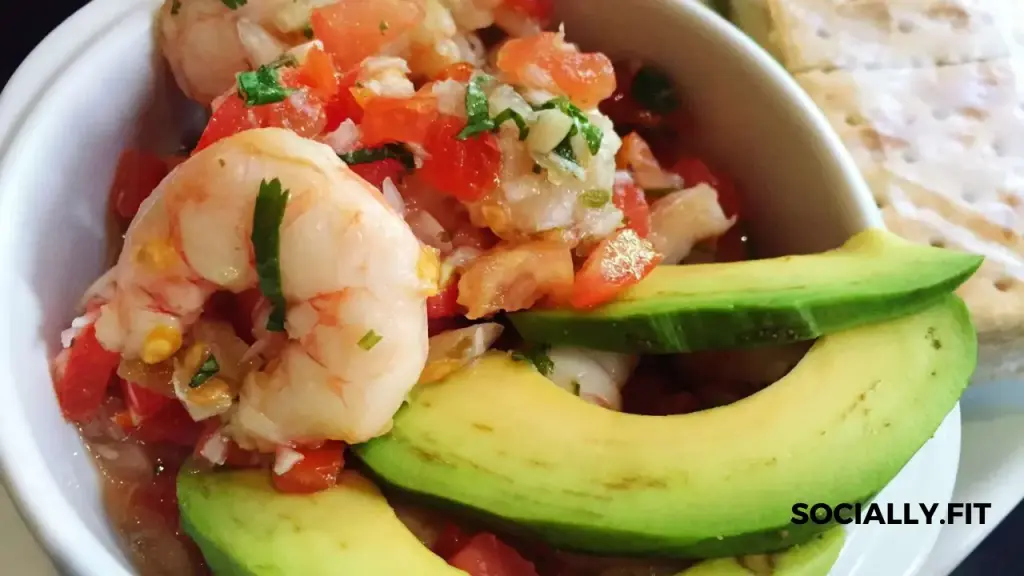
Yes, ceviche can be safe to eat if prepared properly using fresh ingredients and following food safety guidelines. The acidity of the citrus marinade helps “cook” the fish, reducing the risk of harmful bacteria. However, it’s essential to use high-quality, sushi-grade fish and ensure proper refrigeration to minimize the risk of foodborne illnesses. Additionally, individuals with compromised immune systems, pregnant women, and young children should exercise caution when consuming raw fish dishes like ceviche.
Is Ceviche Healthy
Can I eat ceviche if I’m pregnant?

Pregnant women should exercise caution when consuming ceviche due to potential risks associated with consuming raw fish. While ceviche prepared with fresh, high-quality fish and proper marination techniques can be safe for consumption, there are scientific reasons why pregnant women may want to avoid it:
- Risk of Foodborne Illness: Raw fish, including the fish used in ceviche, may harbor harmful bacteria and parasites such as salmonella, Vibrio vulnificus, and parasites like tapeworms. Pregnant women are more susceptible to foodborne illnesses due to changes in their immune system, which may increase the severity of symptoms and pose risks to both maternal and fetal health.
- Mercury Contamination: Certain types of fish commonly used in ceviche, such as swordfish and king mackerel, may contain high levels of mercury. Mercury exposure during pregnancy can harm the developing nervous system of the fetus and lead to developmental delays, cognitive impairments, and other adverse health effects.
- Potential Allergic Reactions: Some pregnant women may have allergies or sensitivities to certain types of fish or seafood used in ceviche. Allergic reactions during pregnancy can range from mild symptoms like hives and itching to severe reactions like anaphylaxis, which can be life-threatening and pose risks to both maternal and fetal health.
Is Ceviche Healthy
How long can ceviche be stored?
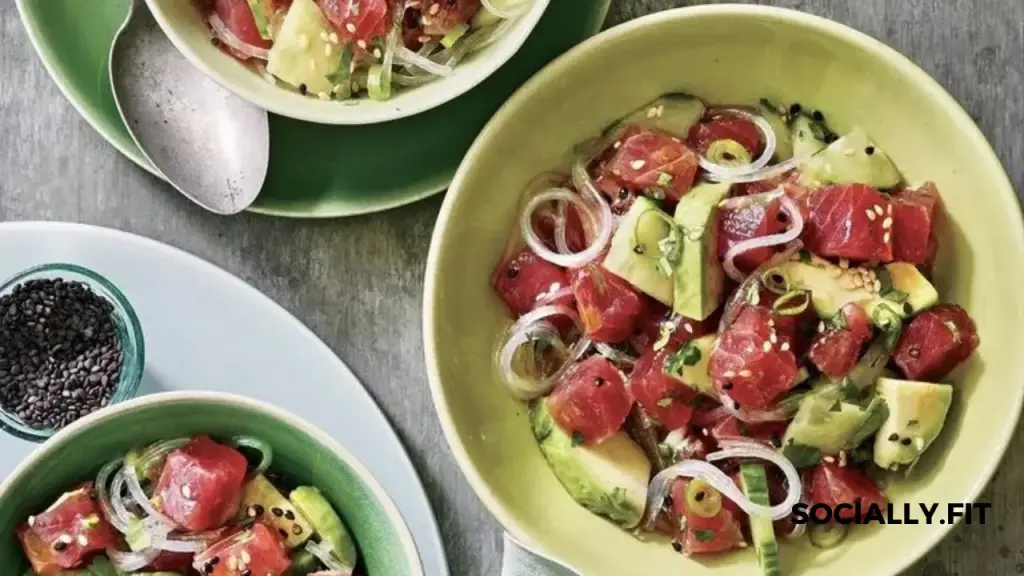
Ceviche is best consumed fresh, ideally within a few hours of preparation. However, if you have leftovers, you can store ceviche in the refrigerator for up to 24 hours. It’s essential to transfer the ceviche to an airtight container and refrigerate it promptly to maintain its freshness and prevent bacterial growth. Keep in mind that ceviche may experience deterioration in texture and flavor over time, so it’s advisable to consume it within a day for optimal taste and quality. Avoid leaving ceviche at room temperature for extended periods, as this can increase the risk of foodborne illnesses. If you’re unsure about the safety or freshness of leftover ceviche, it’s best to err on the side of caution and discard it to prevent potential food-related complications.
Is Ceviche Healthy
Is it necessary to use raw fish for ceviche?

While traditional ceviche is made with raw fish, it is not strictly necessary to use raw fish for ceviche. Some variations of ceviche incorporate cooked seafood or even vegetarian ingredients. However, using raw fish is traditional and provides the characteristic texture and flavor of ceviche. Raw fish is marinated in citrus juices, which “cook” the fish by denaturing the proteins, resulting in a firm yet tender texture. If you choose to use cooked seafood instead of raw fish, you may miss out on this unique texture and flavor profile. Additionally, using raw fish allows you to fully experience the freshness and delicate flavors of the seafood. However, if you have concerns about consuming raw fish due to food safety or personal preferences, you can certainly experiment with cooked seafood or vegetarian alternatives to create a variation of ceviche that suits your taste and dietary preferences.
Is Ceviche Healthy
Conclusion

In conclusion, ceviche is a delicious and versatile dish that offers a refreshing taste of coastal cuisine with a rich cultural heritage. With its combination of fresh fish or seafood, tangy citrus marinade, and vibrant seasonings, ceviche delights the senses and satisfies the palate. Despite its culinary appeal, it’s essential to consider factors such as food safety, nutritional content, and individual dietary preferences when enjoying ceviche. By using fresh, high-quality ingredients, practicing proper food safety measures. Consuming ceviche in moderation can indulge in this flavorful dish while minimizing potential risks. Whether enjoyed as an appetizer, main course, or shared among friends and family. Ceviche embodies the vibrant spirit of Latin American cuisine and continues to captivate food enthusiasts around the world. So, savor the taste of the sea and the warmth of tradition with a tantalizing serving of ceviche!
Is Ceviche Healthy
FAQ

- How often can I eat ceviche?
It’s best to enjoy ceviche in moderation due to its potential risks associated with raw fish. Eating it occasionally as part of a balanced diet is recommended. - Are there any alternatives to raw fish in ceviche?
Yes, alternatives include cooked seafood such as shrimp or crab, or vegetarian options like hearts of palm or mushrooms. - Can I add other seafood to my ceviche?
Yes, you can add various types of seafood like shrimp or squid to create a seafood medley in your ceviche. - Does the acidity in ceviche affect dental health?
The acidity in ceviche can weaken tooth enamel over time. So it’s advisable to consume it in moderation and practice good dental hygiene. - Are there any cultural taboos associated with consuming ceviche?
In some cultures, there may be taboos against consuming ceviche during certain religious or ceremonial events.


